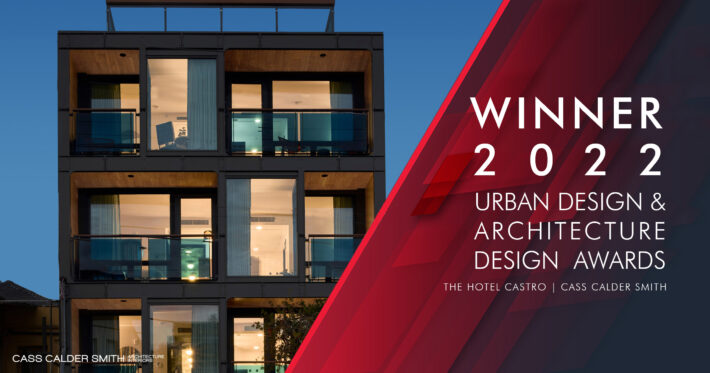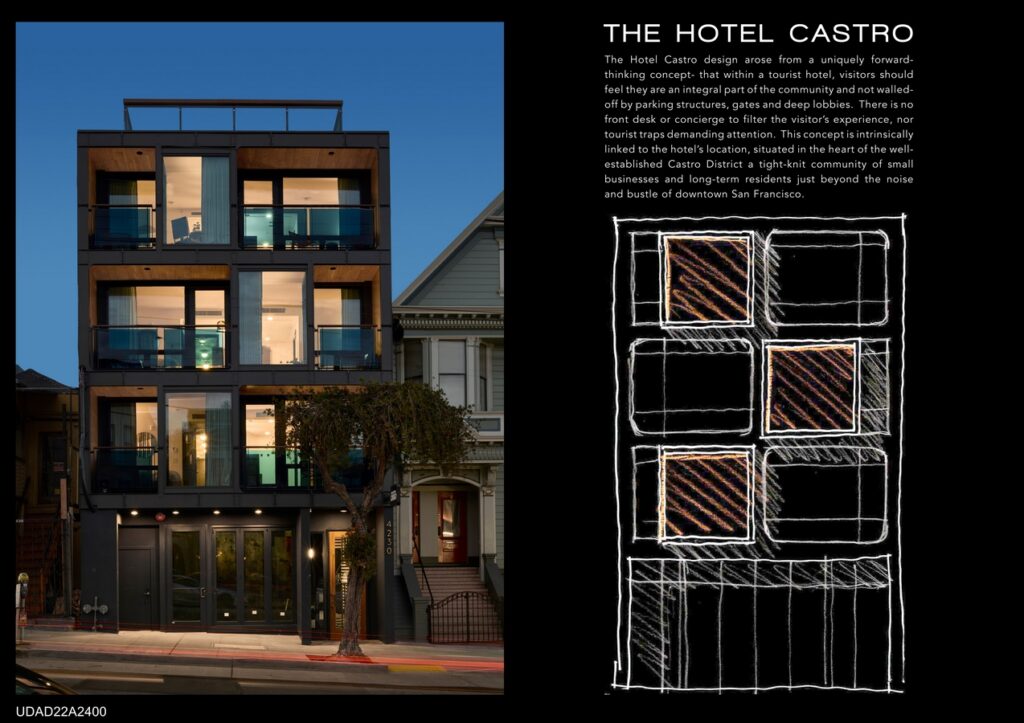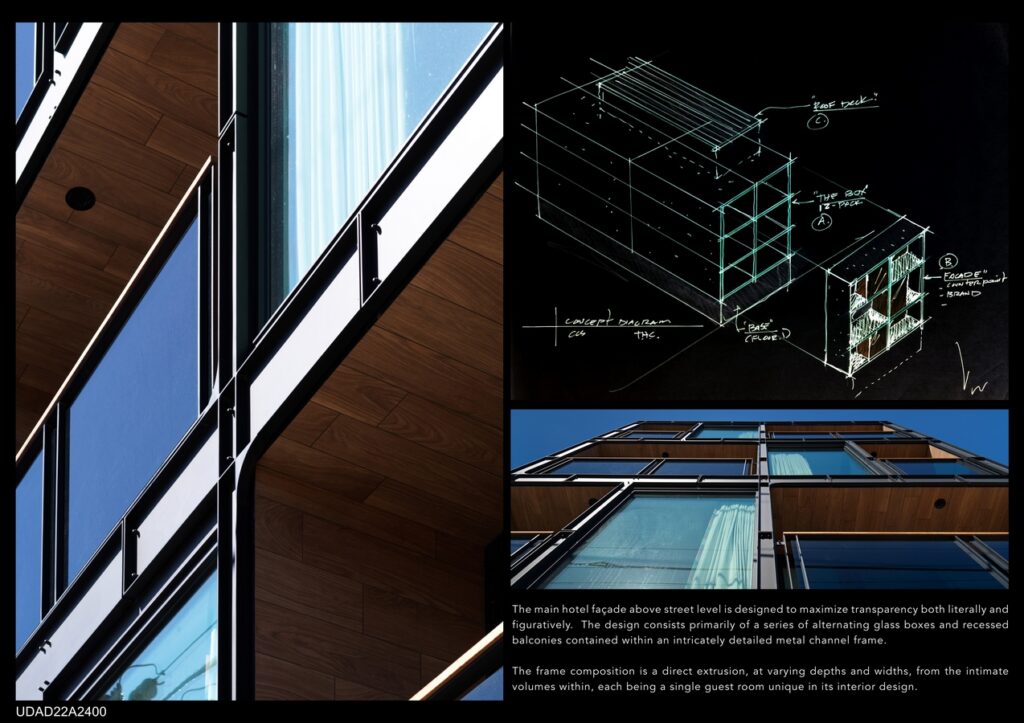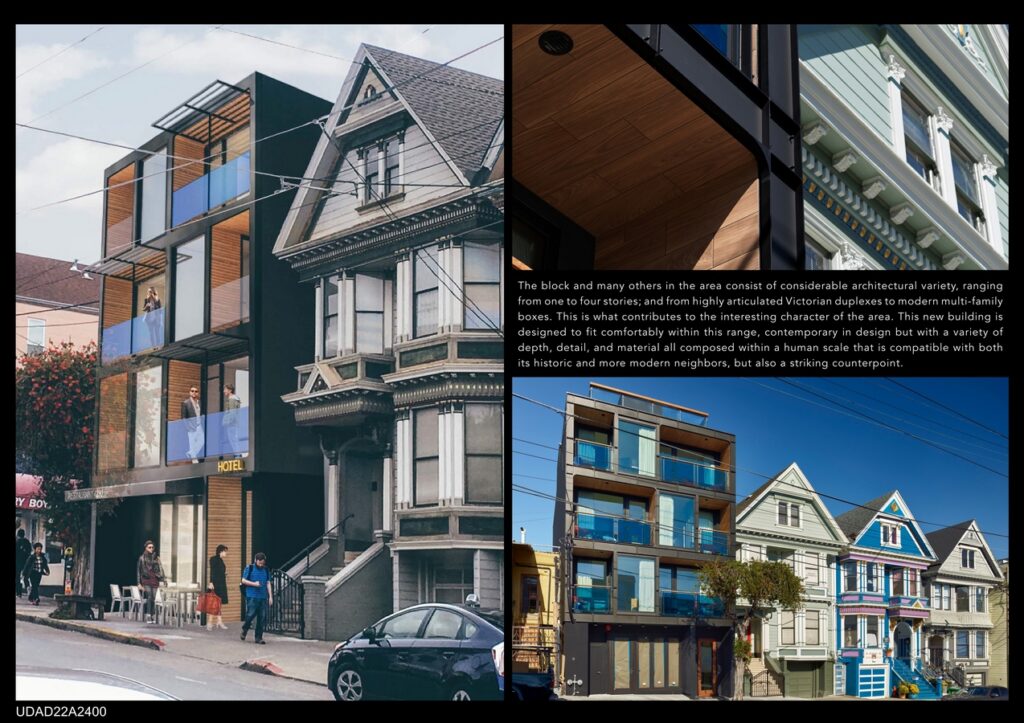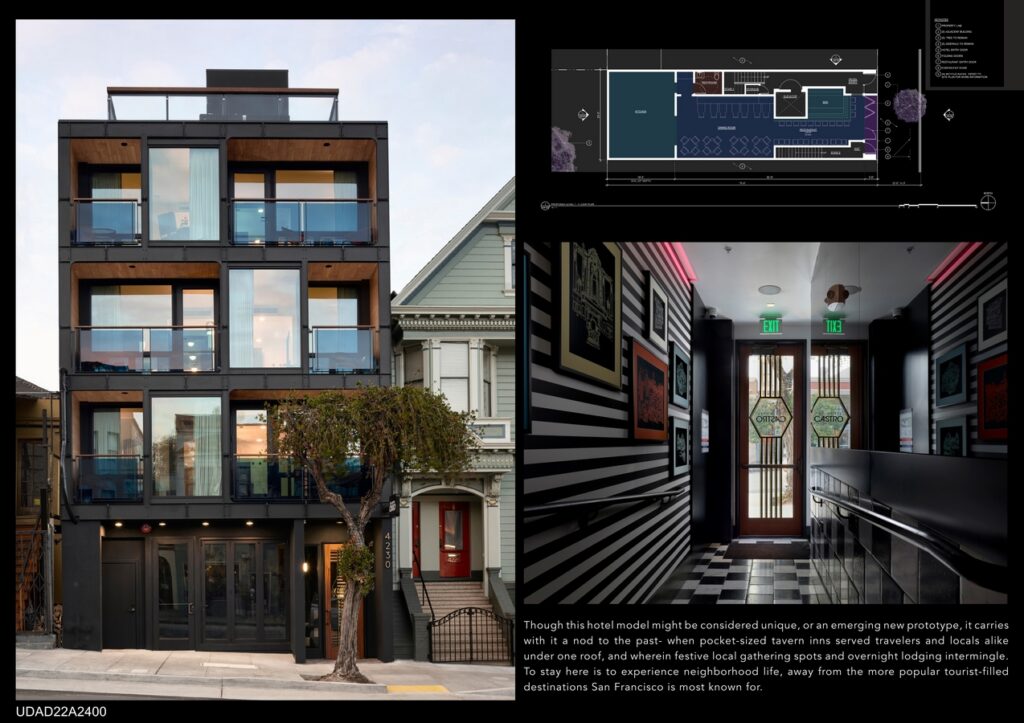The Hotel Castro design arose from a uniquely forward-thinking concept- that within a tourist hotel visitors should feel they are an integral part of the community and not walled-off by parking structures, gates and deep lobbies. There is no front desk or concierge to filter the visitor’s experience, nor tourist traps demanding attention. This concept is intrinsically linked to the hotel’s location, situated in the heart of the well-established Castro District a tight-knit community of small businesses and long-term residents just beyond the noise and bustle of downtown San Francisco.
Urban Design & Architecture Design Awards 2023: Discounted Entries Open Now! Save $50
Super Early Discount – 1st May 2022 to 30th June 2022 – $199 = $149
Gold 🏆 Winner
Urban Design & Architecture Design Awards 2022
The Hotel Castro
Hospitality Architecture Built
Firm
Cass Calder Smith
Architect/Designer
Cass Smith
Design Team
Cass Smith
Location
San Francisco, CA
Country
United States
Photographer/Copyright
©Cass Calder Smith
The hotel was conceived to feel a part of the neighborhood fabric by virtue of its modest size and business model. With only 12 tightly spaced yet efficiently furnished micro-units, the hotel serves a decidedly limited number of guests. CCS Architecture partnered with interior design consultant Jon De La Cruz to ensure each room would be a unique experience for the guests, with custom interior furnishings and wall coverings, and balconies facing the streetscape or the lushly landscaped inner block yards.
The block and many others in the area consist of considerable architectural variety, ranging from one to four stories; and from highly articulated Victorian duplexes to modern multi-family boxes. This is what contributes to the interesting character of the area. This new building is designed to fit comfortably within this range, contemporary in design but with a variety of depth, detail, and material all composed within a human scale that is compatible with both its historic and more modern neighbors, but also a striking counterpoint.
The main hotel façade above street level is designed to maximize transparency both literally and figuratively. The design consists primarily of a series of alternating glass boxes and recessed balconies contained within an intricately detailed metal channel frame.
The frame composition is a direct extrusion, at varying depths and widths, from the intimate volumes within, each being a single guest room unique in its interior design.
The metal channel frame, while revealing the building’s steel structural system, creates depth through the play of light and shadow across the recessed windows and balconies and the various surfaces of wood board siding, black metal guardrail frames, and blue glass guardrail panels.
Though this hotel model might be considered unique, or an emerging new prototype, it carries with it a nod to the past- when pocket-sized tavern inns served travelers and locals alike under one roof, and wherein festive local gathering spots and overnight lodging intermingle. To stay here is to experience neighborhood life, away from the more popular tourist-filled destinations San Francisco is most known for.
The roof terrace, open to all sides with glass guardrails, offers a relief from the street, where small gatherings are framed by sunsets, city lights and skylines and filled with the sights, sounds and smells of the surrounding neighborhood.


